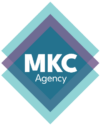Running a great demo is like throwing a memorable Oscars party. It’s both an art and a science; nail it, and you walk away a winner of the party planning Hall of Fame. Throw a lame party, and no one will be accepting next year’s invite or asking you to host ever again.
Sales demos can propel your sales team to a successful upswing, or make your bottom line fizzle out.
A well-designed sales demo makes all your hard work pay off and will get your sales team’s results off and running. The sales demo is meant to be the last step in the sales process, just before contracts are signed and deals are finalized. It’s also the step that comes right after all your discovery calls, meetings and discussions with the client about their needs, particular preferences and pain points. run a great demo
In today’s B2B market, a sweep-them-off-their-feet sales demo is the best way to get ahead in a race where competitors run away with even your best features in a matter of months. Use this powerful tool to showcase how your product or service offers the capabilities, pricing and support that your prospect needs.
Here are some tips to run a successful sales demo.
1. Start With Discovery
When you buy a microwave, the last thing you want to do is read the instruction manual cover-to-cover. Not all the features and details matter. The same can be said for your product. It probably has dozens, if not hundreds, of major features – but the truth is that even people who use it every day don’t care about all the details. Trying to cover everything in one demo is a sure-fire snooze-fest. You’re best to focus on the most important features that are likely to be used most often by the most people and avoid boring your audience to death. That’s where discovery comes in: it helps you hone in on the factors that will be most important to your audience.
This is a job that requires teamwork between your inbound sales pros and your marketing rockstars. Before you start planning your demo, take the time to consolidate and review key data from every client touchpoint thus far.
That gives you what you need to show that you know your prospect’s concerns before you’ve even picked up the phone for a discovery call. You’ll be equipped to ask smart questions, guide the discussion, and pull it all together.
2. Make a Plan
The Girl Guides motto is “be prepared”, and this is yet another area of life that benefits from that solid advice. Once you’ve narrowed down the elements you want to focus on, there’s lots of prep work you can do to make your demo stand out. A streamlined presentation that flows comes off as sleek and professional.
Get your presentation software ready, pull up any links you might need in your browser so they are right at your fingertips, and prepare content you might want to reference – such as a case study or infographic. Download any remote content in case there is a connection issue (which happens more often than you think).
Once you’re set up, don’t forget to practice practice practice–to run through every part of the demo the day before, multiple times. Content is important, but so is familiarizing yourself with the software you’ll be using and knowing how it works. That includes your video conferencing software!
3. Let Them Know What To Expect
The human attention span in 2021 is short and flighty. Even if you have your prospect’s undivided attention, you could lose it any second.
To help your audience focus, start your sales demo by setting a simple agenda that they can follow along with. This sets them up to know what to expect from the get-go.
You can also use this time to go over and pinpoint the high points of past conversations and summarize your grasp of the prospect’s situation. If anything has been miscommunicated or misunderstood, it’s best to find out right now: you may have to adjust on the fly, but better to improvise than to give an unhelpful demo.
Last, but not least, remember to talk a little bit about your company. When your demo knocks it out of the park, it means your new customer enters into a relationship with every part of your business – not just you and your team. You can start to build some trust in your organization right now.
4. Throw in Tie-Down Questions
Tie-down questions are questions that help you get your prospect onboard by giving them a chance to consolidate and reflect back on how your product could serve their needs. In other words, they are leading questions meant to get your prospects mentally reviewing your points.
Tie-down questions can be super simple.
The trick is to combine something important to the prospect with a two-word finisher like:
- “Can’t you?”
- “Isn’t it?”
- “Shouldn’t they?”
For example, you might ask:
- “Improving productivity is important to you, isn’t it?”
- “If a tool could double your profits, you’d use it, wouldn’t you?”
- “That feature could be useful, couldn’t it?”
Throwing out these small comments throughout your presentation will build solid rapport and prime your client for a future agreement. Plus, you won’t have to push for a big close, because you already laid the groundwork for the final deal throughout the conversation.
5. First Things First
If you prepared adequately and were already familiar with your prospect’s priorities, then none of the answers your prospect gave you mid-presentation, while you summarized, threw you off your groove. It’s now time to put the most valuable of those features and insights first.
When you start with what your audience wants most, it gives you a major advantage in holding their attention (remember that short attention span?). You’ll notice that after covering the key points that matter to them, you can end the presentation there.
A modular presentation is ideal so you can move from one bite-sized chunk to the next, so you can adapt to the changing situation much more nimbly and avoid making it sound like you’re coughing up a rehearsed speech.
6. Address Questions
If you’ve thought things through, you probably already know what the most common questions, concerns – and, yes, objections – are when it comes to your product. Usually, the best way to address these is with a Q & A session at the end of your sales demo presentation.
Nothing is as interactive as a Q & A– you’ll end on a high note (if your answers are excellent!)
Of course, prospects can come up with questions at any time during your demo, and they’re definitely going to want answers. If you know you’re going to address a particular question later on, mention it briefly and let them know that a complete answer will be provided at the end. This will avoid slowing down the flow of the presentation.
7. Set Expectations for Next Steps
Once the demo comes to a close, the ball will be in the potential client’s court.
Leave them with the important content fresh in their minds: A small summary of the key points they need to know–especially those they were most excited about, of course.
It’s often a good idea to underscore what resources the customer will need to successfully implement the solution you proposed, like:
- Time Commitment and Timeframe
- Skills (Front-Line and Leadership)
- Willingness and Ability to Learn
- Budget
Then, the final flourish: What they need to do next in order to move things forward. People are prone to take action when the next step is spelled out for them.
Follow these steps and, before you know it, you’ll be reaching higher results and bringing your company’s sales and marketing together for the win.
Need help getting a solid sales demo off the ground? Looking to tweak your marketing strategies? Megan Killion Consulting is a team of experienced, devoted marketing experts. Give us a shout to see how we can help you with your business goals today.

